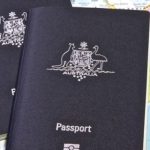The Crime of Possessing Child Pornography Outside Australia

Peter Hansen is a well-educated globetrotter with experience in a range of occupations and callings.
Over the years, the 61-year old has been a priest with the Archdiocese of Melbourne, an Asian studies lecturer, a compensation lawyer, a social worker and a NSW Labor Party official.
He has a bachelor of theology, a law degree and a PhD in Asian history and religious history.
His experience includes providing legal counsel to the Transport Workers Union of Australia, counselling teens with substance abuse issues and undertaking pro bono legal work for Vietnamese asylum seekers in Hong Kong and the Philippines.
The self-proclaimed ‘proud Cabramattan’ has travelled extensively throughout south-east Asia and beyond, spending long periods of time in Vietnam and in the Philippines.
Arrested, charged and refused bail
Mr Hansen returned to Sydney in October last year after a trip to Vietnam.
Upon his arrival, Hansen was arrested by officers from the Australian Federal Police and charged with Commonwealth offences involving child pornography outside Australia and importing child exploitation material, which relate primarily to images of children in the Philippines.
He was refused bail but was granted a suppression order, which was lifted last week.
Hansen’s Supreme Court Bail Application was due to be heard on Thursday, 7 March but police charged him three days beforehand with an additional 21 offences including several involving child abuse material.
As a result, his criminal defence lawyers decided to withdraw the bail application and their client has been remanded in custody pending his next court date.
Child pornography outside Australia
Section 273.5 of the Criminal Code Act 1995 (Cth) prescribes a maximum penalty of 15 years’ imprisonment where a person outside Australia possesses, controls, produces, distributes, obtains or facilitates the production of child pornography material.
Child pornography material is defined by section 473.1 as that which depicts or describes a person under the age of 18, or who appears to be under 18, in a way that reasonable persons would regard as being offensive a person:
A representation of a person who:
- is engaged in, or appears to be engaged in, a sexual pose or sexual activity (whether or not in the presence of other persons); or
- is in the presence of a person who is engaged in, or appears to be engaged in, a sexual pose or sexual activity;
Material the dominant characteristic of which is the depiction, for a sexual purpose, of:
- a sexual organ or the anal region of a person who is, or appears to be, under 18 years or
- a representation of such a sexual organ or anal region; or
- the breasts, or a representation of the breasts, of a female person.
Material that describes a person who:
- is engaged in, or is implied to be engaged in, a sexual pose or sexual activity (whether or not in the presence of other persons); or
- is in the presence of a person who is engaged in, or is implied to be engaged in, a sexual pose or sexual activity.
Material that describes:
- a sexual organ or the anal region of a person who is, or is implied to be, under 18 years of age; or
- the breasts of a female person who is, or is implied to be, under 18 years of age.
For the purpose of the offence, section 273.1 provides that having possession or control of material includes having:
- possession of a computer or data storage device that holds or contains the material; or
- possession of a document in which the material is recorded; or
- control of material held in a computer that is in the possession of another person (whether inside or outside Australia).
The same section states that producing, distributing or obtaining material includes:
- material held or contained in a computer or data storage device; and
- a document in which the material is recorded.
Importing child pornography material
Section 233BAB of the Customs Act 1901 (Cth) prescribes a maximum penalty of 10 years in prison for importing ‘Tier 2 goods’.
To establish the offence, the prosecution must prove beyond reasonable doubt that:
- The person intentionally imported good,
- The goods were tier 2 goods and the person was reckless as to that fact, and
- Their importation was prohibited absolutely under the Act or approval had not been obtained for its importation.
‘Child pornography’ is defined as a document or other good:
that depicts a person, or a representation of a person, who is, or appears to be, under 18 years of age and who:
- is engaged in, or appears to be engaged in, a sexual pose or sexual activity (whether or not in the presence of other persons); or
- is in the presence of a person who is engaged in, or appears to be engaged in, a sexual pose or sexual activity;
and does this in a way that reasonable persons would regard as being, in all the circumstances, offensive; or
the dominant characteristic of which is the depiction, for a sexual purpose, of:
- a sexual organ or the anal region of a person who is, or appears to be, under 18 years of age; or
- a representation of such a sexual organ or anal region; or
- the breasts, or a representation of the breasts, of a female person who is, or appears to be, under 18 years of age;
in a way that reasonable persons would regard as being, in all the circumstances, offensive; or
that describes a person who is, or is implied to be, under 18 years of age and who:
- is engaged in, or is implied to be engaged in, a sexual pose or sexual activity (whether or not in the presence of other persons); or
- is in the presence of a person who is engaged in, or is implied to be engaged in, a sexual pose or sexual activity;
and does this in a way that reasonable persons would regard as being, in all the circumstances, offensive; or
that describes:
- a sexual organ or the anal region of a person who is, or is implied to be, under 18 years of age; or
- the breasts of a female person who is, or is implied to be, under 18 years of age;
and does this in a way that reasonable persons would regard as being, in all the circumstances, offensive.
‘Child abuse material’ is defined as a document or other good:
that depicts a person, or a representation of a person, who:
- is, or appears to be, under 18 years of age; and
- is, or appears to be, a victim of torture, cruelty or physical abuse;
and does this in a way that reasonable persons would regard as being, in all the circumstances, offensive; or
that describes a person who:
- is, or is implied to be, under 18 years of age; and
- is, or is implied to be, a victim of torture, cruelty or physical abuse;
and does this in a way that reasonable persons would regard as being, in all the circumstances, offensive.
The matters to be taken into account in deciding whether reasonable persons would regard a particular document or other goods as being, in all the circumstances, offensive, include:
- the standards of morality, decency and propriety generally accepted by reasonable adults; and
- the literary, artistic or educational merit (if any) of the material; and
- the general character of the material (including whether it is of a medical, legal or scientific character).
Charged with a child pornography offence?
If you have been charged with a child pornography or child abuse material offence, contact Sydney Criminal Lawyers anytime on 9261 8881 to arrange a free first conference where one of our experienced defence lawyers can assess your case, outline your options and advise you of the best way forward.






